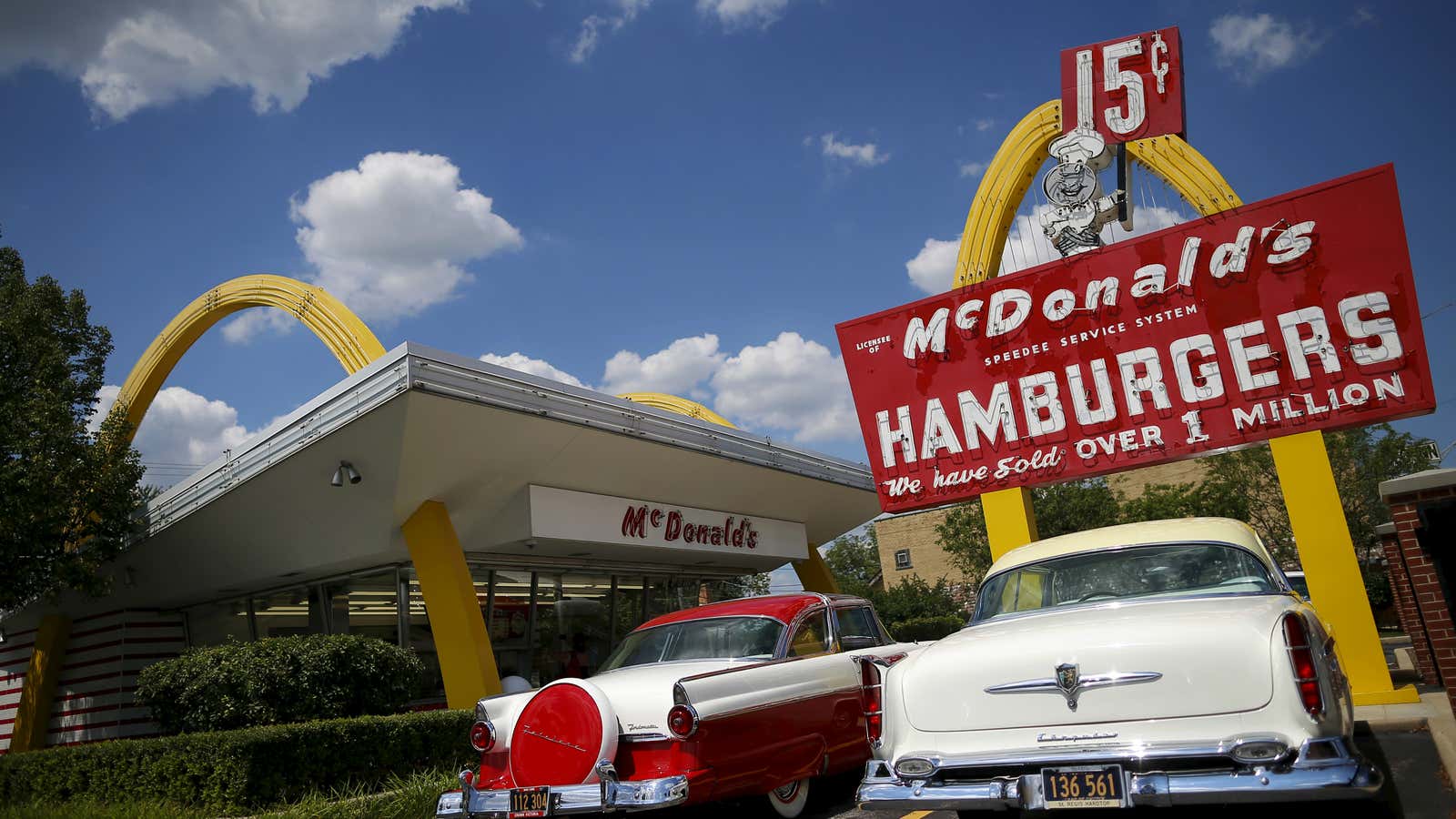It’s about time the global poster child for hamburgers actually made a burger that wasn’t frozen, right?
Fast-food burger chain McDonald’s this week said it would begin serving up its famous Quarter Pounder burgers with fresh beef in the US starting sometime in the middle of 2018. For now, it will only be that product. Patties in its cheeseburger and other kinds of burger will stay frozen.
The company began testing fresh beef burgers in earnest during 2016 at about 400 of its locations in Texas and Oklahoma. In the process, it learned that adding fresh beef to the menu does pose several process-related challenges for the world’s biggest burger chain and its franchisees:
- Fresh patties have to be cooked-to-order and shouldn’t sit for more than five minutes. Frozen patties, by contrast, can be prepared ahead of time and can sit for up to about 15 minutes in a warmer.
- Another timing issue: the toasters that cook the hamburger buns are actually faster than the cook time for a fresh beef patty, layering on another calculation headache.
- And then there’s the drive-through, which accounts for 70% of McDonald’s US sales. Cooking burgers to order is a tough ask for restaurant workers during high-traffic periods of the day. According to an analysis by Credit Suisse analysts, it’s an issue that could be remedied by enlarging grill space. But that kind of change is estimated to cost franchisees about $18,000 each.
But offering a fresh beef patty is not an impossible feat for a fast food company chain. Wendy’s, In-N-Out, Smashburger, Five Guys, and Steak ’n Shake have all managed to make it work. Wendy’s, in particular, was more than eager to needle its competitor after the fresh beef announcement came out:
Of course, one of the biggest hurdles for McDonald’s will be finding sources that can supply enough fresh beef to supply its more than 14,000 US locations, something CEO Steve Easterbrook mentioned in June 2016 at an investor conference. At that time, Easterbrook said such a switch would likely have to take place in phases, like the company did when it changed to using only cage-free eggs.
The long-discussed move makes sense. Going from being the most dominant player to one where only 20% of American millennials have ever tried a Big Mac, McDonald’s has been looking for ways to boost its image as it navigates an increasingly competitive food space filled with fast-casual restaurant chains that market all manner of fresh menu items and responsibly sourced supply chains.
The fast-food chain has started using butter instead of margarine on its Egg McMuffins, and it began sourcing chicken from farms that raise the birds without antibiotics.
